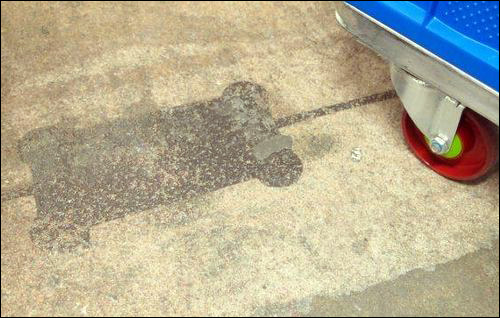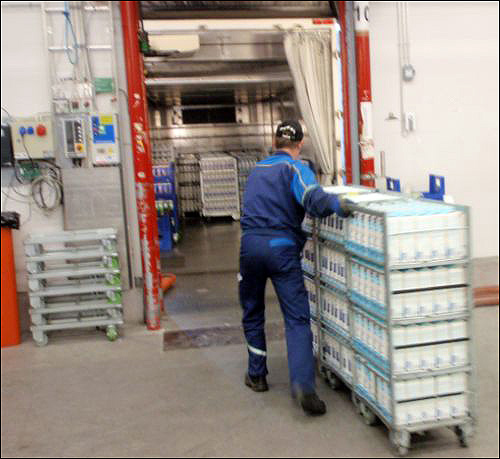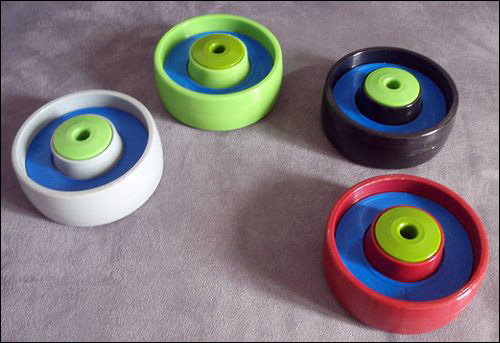Nov 13, 2013Valio, a Finnish company that manufactures dairy consumer products, as well as powdered milk and other ingredients for the food industry, is piloting an automated solution for monitoring products as they move through packing and shipping processes, via RFID-enabled wheels on carts, also known as trolleys, that transport the goods. Aksulit supplied the RFID solution, which features Tagwheel—a plastic wheel with a passive ultrahigh-frequency (UHF) tag built into it. The wheel, developed for this deployment by RFID tag and services provider Wisteq, fits onto a trolley on which goods are transported. The solution also includes software developed by Aksulit, as well as readers provided by Impinj, according to Asko Puoliväli, Aksulit's CEO.
Valio is a market leader for dairy products within its own country, but the company exports its goods to more than 60 other nations worldwide. It typically takes the firm 48 hours or less to move its milk and cream products from farm to store. To transport that large volume of goods efficiently, Valio maintains a highly automated facility that employs up to 500,000 rolling carts loaded with products at any given time. Those trolleys are shared with other dairy companies operating in Finland.
At Valio's site in Jyväskylä, milk is chilled, pasteurized, containerized and placed on trolleys to fill specific orders. The loaded trolleys then pass down conveyors and are placed on trucks destined for stores throughout Finland. Most of this process is accomplished via robotics. Orders for goods are automatically picked by cranes and stacked on trolleys, which move down conveyors to staging areas where employees push the carts to the appropriate dock doors and onto trucks. Due to the large volume of trolleys, as well as trucks picking them up, the company has a daunting task in ensuring that the correct product is loaded for each order.
Two years ago, Valio began piloting the use of an RFID system to identify carts being removed from conveyors at a staging area, when they pass through a dock door to be loaded, and when they return through another dock door, says Aki Liukko, Valio's development manager of warehouse logistics.

The solution was custom-made for Valio, says Ari Pesonen, Wisteq's CEO, since simply attaching RFID tags to trolleys and installing readers at dock doors would be ineffective. The dairy facility provides unique challenges for UHF RFID transmissions, Pesonen reports, since the environment is largely metallic and contains liquid milk, both of which can thwart UHF signals. In addition, exposed reader antennas could be damaged during the fast-moving loading processes, so Valio and Wisteq developed a system by which the antennas were installed in the floors. This also required that an RFID tag be positioned close to the floor. Simply attaching a tag to each cart's exterior, or to its wheels, created several problems as well, says Pesonen: The tags would have trouble transmitting when applied directly to metal, and they would likely be frequently knocked or scraped during the shipping and cleaning processes. Therefore, Wisteq developed a tag that was incorporated directly into a specialized wheel.
The Tagwheel's built-in passive EPC Gen 2 UHF RFID tag (Pesonen declines to identify the tag's make and model) is separated by plastic from any metal, and is protected from any impacts, as well as from the washing process. It provides a wide reading area and offers a long read range, he says. However, Valio needed a short read range to ensure that the system would not pick up stray reads of other trolleys within the staging area. That shorter read range was accomplished via adjustments to the reader and antennas.
With the solution, a Wisteq wheel is attached to each of the approximately 100,000 trolleys arriving at the facility. The company required only a single RFID tag on each cart, Liukko explains. Impinj's Speedway Revolution R420 reader (with specially designed antennas from Aksulit), installed in the floor, interrogates the wheel's tag as the cart is brought into the facility. The Aksulit software, residing on Valio's database, then updates the inventory list of available trolleys.
When a retailer places an order, the automated system picks the requested products and stacks them on an empty trolley. As an employee removes the cart from the conveyor line, the reader captures its tag's ID number and forwards that information to the Aksulit software, which then links the ID to the purchase order.

Workers can then look at the printed purchase order for each trolley before loading the cart onto a truck by pushing it through the dock door and over the RFID antenna installed in the floor. The antenna captures the unique ID number encoded on that wheel's tag, thereby updating the status of that order to indicate that the trolley has been loaded for shipping. The Aksulit software can also issue alerts, by illuminating a warning light, sounding an alarm or sending a message via text or e-mail, in the event that a trolley is loaded onto the wrong truck or at the incorrect time. However, Valio has not yet adopted this function.
Emptied carts are later returned to the plant for washing and reuse.
The RFID system, Liukko says, reduces the incidence of errors, as well as the amount of manual labor previously necessary to ensure that the proper trolleys were being loaded for each shipment. However, he declines to indicate Valio's future plans regarding the technology at this time, other than to say that the company expects to begin a second phase, during which it plans to test RFID readers at multiple locations within the facility, in order to track when trolleys move from one area to another prior to shipping.
Wisteq intends to market the Tagwheel to other clients as well, for tracking trolleys within a dairy or at other manufacturing or production plants.


